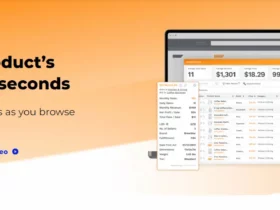Suffice to say that in March 2021, a full year since the dawn of the coronavirus pandemic in the US, remote work is here to stay.
If the COVID-19 pandemic has had one silver lining, it’s that our corporate world has learned that productivity, efficiency, and business results no longer reside in the confines of a once-traditional office building.
As Brent Hyder, President & Chief People Officer at Salesforce, recently stated in the company’s formal statement on their decision to allow employees to work from anywhere, “An immersive workspace is no longer limited to a desk in our Towers; the 9-to-5 workday is dead; and the employee experience is about more than ping-pong tables and snacks.”
Salesforce, among others in the business and technology space such as Google, Spotify, and Dropbox, announced just last month that it will now offer its employees three ways of working including: Flex (in-office 1–3 days per week), Fully Remote, and Office-Based.
More and more companies are expected to transition to this hybrid workforce model, by which their workforce is composed of both at-home and in-office employees.
Given this reality, it is high time to treat remote and in-office workers alike with the right employee benefits plans.
These plans not only help with employee engagement but also on a ton of other aspects as well, such as hiring and recruiting, company PR, and overall workplace satisfaction.
Here are five up-and-coming benefits to offer to a hybrid workforce:
Employee Assistance Programs (EAPs)
2020 was a tough year for many people, likely including at least several members of your own workforce.
For this reason, many organizations are adding employee assistance programs (EAPs) to their benefits programs. As SHRM defines it, “An employee assistance program (EAP) is a work-based intervention program designed to assist employees in resolving personal problems that may be adversely affecting the employee’s performance.”
Although EAPs were once targeted to assist employees in alcohol or substance abuse, they have since become much more expansive, and now include a broader range of issues such as mental health, relationship challenges, financial or legal advice, and childcare.
In addition, these services can be extended to an employee’s spouse, children, and non-marital partner living in the same household as the employee.
As health and wellbeing outside the workplace become greater concerns and are more comfortably discussed among colleagues, EAPs are a great way to show support for your employees.
Relocation Support
With more organizations granting employees the opportunity to work from anywhere, it should come as no surprise that many employees are taking it as a sign to uproot to their dream city, move closer to friends and family, or even embrace a more nomadic lifestyle.
With new flexibility at their fingertips, your employees will likely turn to you for guidance and support.
Although many organizations may already have relocation assistance or benefits in place, this traditionally was relegated to employees forced to move to be in close proximity to the company’s HQ.
With the transition to hybrid and remote office structures, it may be worth expanding this benefit to accommodate other moves as well.
If you’re unable to financially support a move, you can still help by providing resources on how to begin the mortgage preapproval process, becoming acclimated to a new city, or even how to transfer their healthcare to a new, local network.
Home Office Stipends
You may not know this, but offices spend a massive amount of money on office supplies that workers regularly use to conduct business, such as paper, pens, and staples, in addition to shared items like printer ink.
In a traditional office setting, employees were free to use these supplies at their disposal at the cost of their employer.
However, employees who have since gone remote are now forced to front these costs themselves.
A great way to extend this benefit to your remote workforce is to offer a once-a-month home office stipend.
This will allow your remote employees to use this sum of money at their discretion, whether they choose to revamp their home office space, use it toward their monthly internet bill, or to keep their office supplies stocked.
Unsure how much to offer each month? The LAC Group, a spend management company, advises to budget approximately $200 per employee per year.
However, you might want to consider offering $20–40 a month, which should cover most office essentials.
Student Loan Repayment Solutions
As younger members of the population join today’s workforce, many are inundated with student loan debt. In fact, among the Class of 2019, 69% of college students took out student loans, and they graduated with an average debt of $29,900.
The same resource reports that, in sum, Americans owe over $1.71 trillion in student loan debt, spread out among about 44.7 million borrowers.
As a result, more companies are providing solutions to help employees with their student loan balances.
In some programs, a company will match a worker’s contribution to their student loan debt directly. In others, the employer may put that match toward the individual’s retirement fund. Famously, Google announced in September that they will be rolling out this benefit to their US employees in 2021, and have committed to match up to $2,500 per full-time employee per year toward their student loan payments.
As John Casey, Google’s director of Global Benefits, noted in a company blog post, the company’s new perk aims to help students save the extra money so they can do things like purchase a home or start a family.
Corporate Wellness Plans
Just because the focus has moved to your team’s overall wellbeing, doesn’t mean you can’t offer programs specific to their physical health.
In the past, companies often focused on employee wellness programs by securing discounts at local health clubs, encouraging their employees to attend outside work hours.
This is a great way to show appreciation for your employees.
Cutting-edge organizations even started adding in-office fitness centers so that employees could work out during their lunch break or right after work.
However, with a hybrid workforce, this type of wellness plan is no longer feasible, as it’s reliant on geographical location.
As an alternative, try offering subscriptions to virtual wellness apps or programs like Noom or Obé Fitness.
“One-size-fits-all” benefits are no longer in demand or effective, especially as today’s workplaces adapt a hybrid workforce model. Using the above up-and-coming HR benefits as inspiration, be sure to meet the demands of the modern workforce for happy, healthy, and engaged employees.












